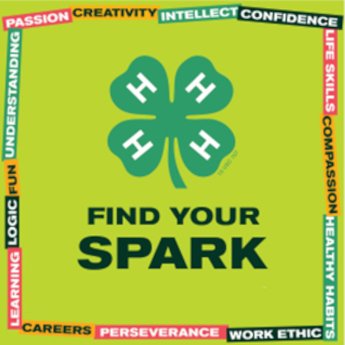How to make a quality impression for dairy beef showmanship
Learn how to make a quality impression for dairy beef showmanship with these basic tips.

There is an old saying that says, “You never get a second chance to make a first impression.” Some argue that it’s true, while others argue that it’s not true. Regardless of which side of the debate you’re on, making quality impressions is something that takes time, thought, preparation and skill and can decide the outcome of a competitive scenario.
4-H teaches youth many life skills and lessons learned through 4-H programs can be applied to many real-world scenarios. One case in point is teaching youth that the impression made in showmanship is parallel to the impressions made in a job interview. For example, one wouldn’t show up for a job interview in dirty, ragged clothes and tennis shoes. Or, one wouldn’t show up late for a job interview or joke around right outside of the door. Any hiring manager would tell you to be clean and dressed for the job that you want, show up to the interview early, and be professional and focused from the moment you step into the building. Not to mention, it’s crucial to be courteous to any staff you meet before meeting with whomever is conducting your interview!
While these are all basic job interview strategies that most people know, what often sets certain candidates apart are the small but important things they do both before and during the interview. The same parallels can be used for dairy beef showmanship. Here are some basic tips for a successful impression for dairy beef showmanship
- Animals thrive on routine and consistency. Feed, water and hay your steer the same way you would at home. In addition, exercising your steer multiple times a day during the show or fair week is crucial for a positive show experience. If your steer is used to being loose at home and then comes to the fair and is tied to a barn wall for days, they will have built up energy. Without being exercised, you can expect your steer to act up in the show ring as they don’t understand that the show ring is not the place to burn off that energy.
- Before the show begins, go to the show arena and look at the arena floor. Find any low and high spots so you know where to stop and set, or where to not to stop and set your steer. Ideally, you should set their front feet on the higher ground. You should never stop your steer with their front feet in a low spot. You should also try and get your calf out and into the ring so the calf can get used to that particular show ring environment.
- You should always watch at least one class of showmanship before your class, if you are not the very first class of the day. This helps you know the pattern that the judge is expecting, and it can help you learn what that judge is looking for in showmanship if they share tips on the mic. It can be frustrating for judges to not only judge what’s being presented to them, but also having to direct traffic along the way because youth don’t know where to head in the ring. Before you enter the ring, know the pattern of the class.
- Make sure that you and your animal are clean, dry, and ready to go in plenty of time. Showing cattle in boots is the best way to go, coupled with clean, dark jeans and a clean professional-looking button-down shirt. Wear a belt to complete the professional look. Phones should be left in the showbox, gum should be discarded and the number harness should be clean and fit appropriately. The strap above the number window is the back of the harness.
- Have the appropriate tools. It is recommended that showsticks are black or silver, and that you show with a plastic comb. The teeth need to face you and not to the outside. The steer’s halter also needs to fit properly. The nose band should be halfway between the steer’s eyes and nostrils. The lead strap shouldn’t be wrapped in the exhibitor’s hand or dragging on the ground.
- Showmanship starts in the make-up ring. Arrive early with plenty of time for your steer to get acclimated to the temperature, the noise and other environmental factors before they hit the ring. Be sure to apply fly spray and a bit of gloss to that animal, comb the hair in a forward direction, clean the hooves, and brush out the switch. Before you enter the ring, find the judge and show through the opening gate with eye contact, focus and competitive look that begins in the make-up ring.
Just as job interviews start well before walking through the interview door, these tips can help you enhance the impression you make on a judge during dairy beef showmanship. However, there is a lot more to being successful and winning dairy beef showmanship requires a lot of work at home, dedication, determination and the ability to be coached and to learn from others. For more information on the dairy beef or dairy feeder project area, contact your local Michigan State University Extension office.



 Print
Print Email
Email





